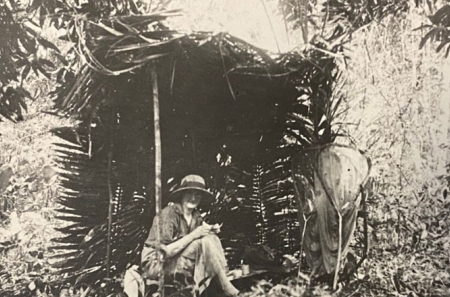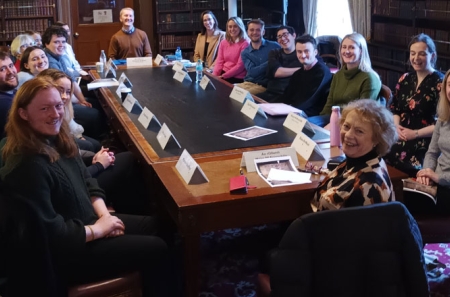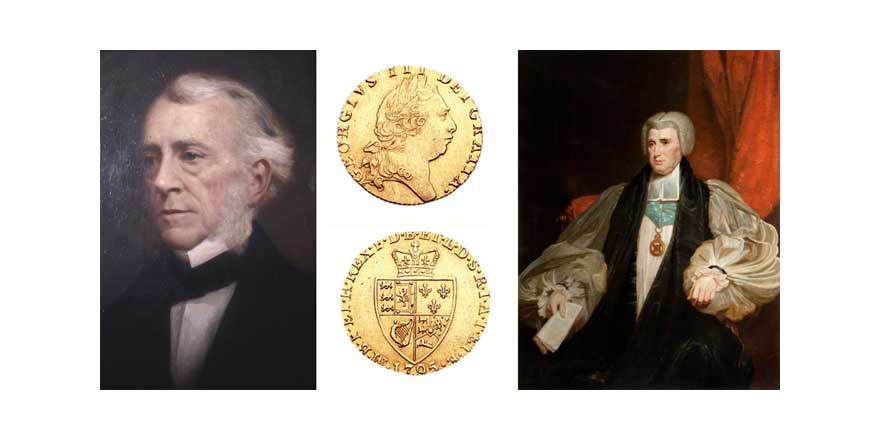
Bishops and Bullion – Papers of Charles Haliday
11 July 2023The Library is delighted to announce our UCD Student Blog Series.
This year the Library collaborated with students on the MA Archives and Records Management providing them with access to archival collections. The students worked on four collections: Charles Vallancey Papers (A050), Falkiner C. Litton Papers (A051), Ouzel Galley Collection (A052) and Charles Haliday Papers (A053). The students wrote blog posts about the fascinating material they came across and the first blog to feature in this series was written by Ben Callan.
As part of our ‘Recordkeeping in Practice’ module in UCD’s MA in Archives and Records Management, the class was given the chance to work on some of the Royal Irish Academy Library’s collections. Our group worked on the Charles Haliday Papers (RIA A053).
Charles Haliday, born c. 1789 in Dublin, was a historian and collector of books and antiquities. He was elected to be a member of the Royal Irish Academy in 1841 and was Vice-Chairman of the Dublin Chamber of Commerce. He is perhaps best remembered for his vast Irish pamphlet collection held by the RIA, which numbers around 35,000, the earliest dating to 1578.

Fig. 1 Portrait of Charles Haliday, 1789-1866 Fig. 2 Sir Edward Baker Littlehales, Lord Lieutenant of Ireland 1798-1801
and Under-Secretary at the Military Department, Dublin 1801-1819.
The papers we received, although highly interesting, gave the impression that they were scooped at random into a box from a shelf in Haliday’s office (perhaps indicative of Haliday’s collecting style), with material varying in language from Latin, French, Irish and English, and topics ranging from shipping, landed estates, genealogy, and Gaelic culture. Trying to understand any definite links between the various different categories and why they were in the same box, we soon discovered, was a hopeless endeavour. One series, however, had a definite shape to it. A series of correspondence, relating almost entirely to Yeomanry Corps in Ireland in the early nineteenth century, mostly addressed to Sir Edward Baker Littlehales. From 1801-1819, Littlehales was one of two permanent under-secretaries in the Chief Secretary’s Office which since 1777 had been divided into two departments, the civil and the military.[1] Littlehales was responsible for the military department and throughout the correspondence is often addressed by the impressive title ‘Secretary at War’.
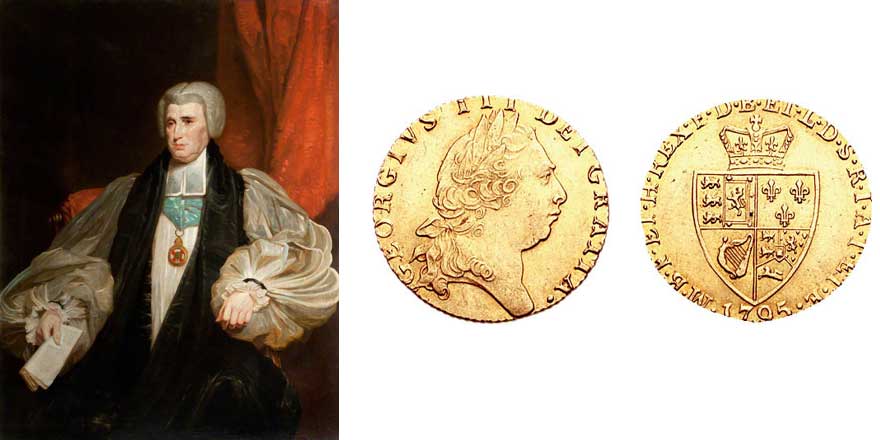
Fig. 3 William Stuart, Archbishop of Armagh, 1755-1822. Fig 4 George III ‘Spade’ guinea, 1795.
One letter in particular caught my eye for the insight it provided into the political and economic situation in Ireland in the early nineteenth century. It is a copy of a letter addressed not to Littlehales, but the Lord Lieutenant at the time, Philip Yorke, 3rd Earl of Hardwicke. Dated 24 October 1803, it was sent by the head of the Established Church in Ireland William Stuart, Archbishop of Armagh. The topic of the letter centres on a serious issue facing Ireland at this time: one of currency. Stuart fundamentally disagrees with Hardwicke’s view that the linen trade and rent payments should be conducted with paper money. He reports to the Lord Lieutenant:
‘The linen traders were to meet at Armagh for the purpose of entering into an agreement to pay for linen in bank notes only, and to allow no discount. As the shopkeepers in the North of Ireland will not receive a Bank Note without discount the unhappy weaver must, by this arrangement, suffer a considerable loss’.
The ‘discount’ Stuart refers to is a result of the premium placed on coinage due to its rarity relative to paper money. Testimony given in the Bullion Committee Report of 1810 explains the peculiar situation:
‘In that part of Ireland in which guineas still circulate, two prices are put on every article offered for sale; and it is common to buy at the coin price, and pay in paper, when the buyer pays in addition what is called the discount, which however is the premium of guineas’.[2]
Paper money had already been circulating in Ireland in one form or another since the 17th century. Its use became more widespread in the late 18th and early 19th centuries due to restrictions placed on the economy by the English government and the constant outflow of investment funds to Britain by way of absentee landlords. As a result, there was an almost constant shortage of silver coinage in Ireland during this period, leading various merchants, businesses and private banks to issue ‘small notes’ (notes with a value of less than £5, issued in denominations of pence, shillings, guineas and pounds).

Fig. 5-6 Letter from Archbishop of Armagh to Lord Lieutenant regarding bank notes, 24 October 1803, pp 1-2 (RIA AO53/1/1/3/3)
Paper money became far more widespread after the passing of the Bank Restriction Act 1797, which suspended the discounting to face value of paper money to fuel England’s need for gold to finance its wars on the continent. This led to the depreciation of paper money due to the unrestricted issuing of notes by banks no longer needing to back them with gold, leading to an unfavourable exchange rate between Ireland and England and further draining Ireland’s coinage. Testimony from a House of Commons Select Committee on the ‘State of Ireland as to Circulating Paper, Specie and Current Coin’ explains:
‘The state of the exchange naturally caused the silver currency of Ireland, so long as it was degraded only in the same degree with the currency of England, to transfer itself to this country, where it would pass for the same sum as English silver money’.[3]
The problem became so bad that silver and gold coinage went almost entirely out of circulation, replaced by small notes, except in the north of the country. The Archbishop writes:
‘Should the views of the linen traders be accomplished, the North will be as bare of cash as the South of Ireland and in a week no gold will be seen’.
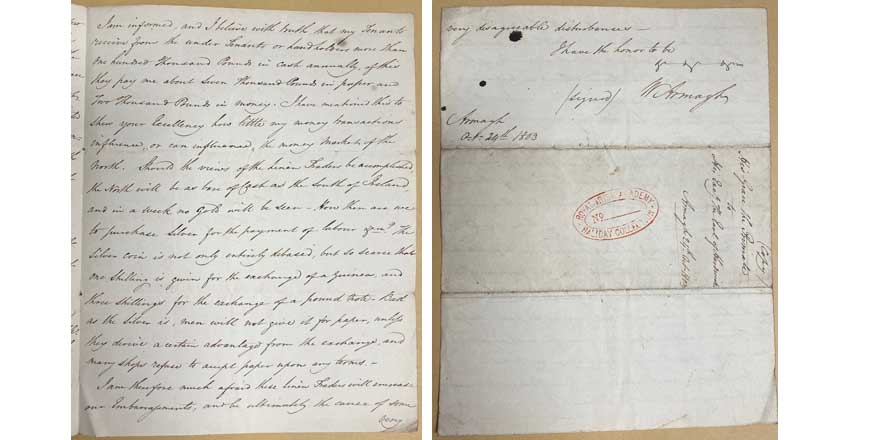
Fig. 7-8 Letter from Archbishop of Armagh to Lord Lieutenant regarding bank notes, 24 October 1803, pp.3-4 (RIA AO53/1/1/3/3)
The north of the country had managed to keep coinage in circulation mainly because relatively few private banks had been established there. The Archbishop expounds on this apparent abundance of cash in the north when discussing the payment of rent in paper money, which he claims landholders will not accept due to its ‘manifestly detrimental’ nature:
‘The payment of rent in cash has long universally pervaded in this country, has hitherto been attended with little inconvenience to the tenants, and so far from draining the North of specie, it has contributed to prevent the exportation of gold, for, while in the South not a guinea is to be seen, in this part of Ireland they are more abundant than in England’.
Stuart frames his argument as a means of avoiding disturbances that would ‘increase our embarrassments’ ‘at this awful moment’. Written just three months after the 1803 Rebellion, the Archbishop’s use of Robert Emmet’s failed insurrection in his argument underscores the shockwaves the event sent through Dublin Castle and the London establishment. The language highlights the growing realisation in the wake of the rising that, rather than finally solving the ‘Irish Question’, the 1800 Act of Union would deepen many of the issues associated with the governance of the island.[4]
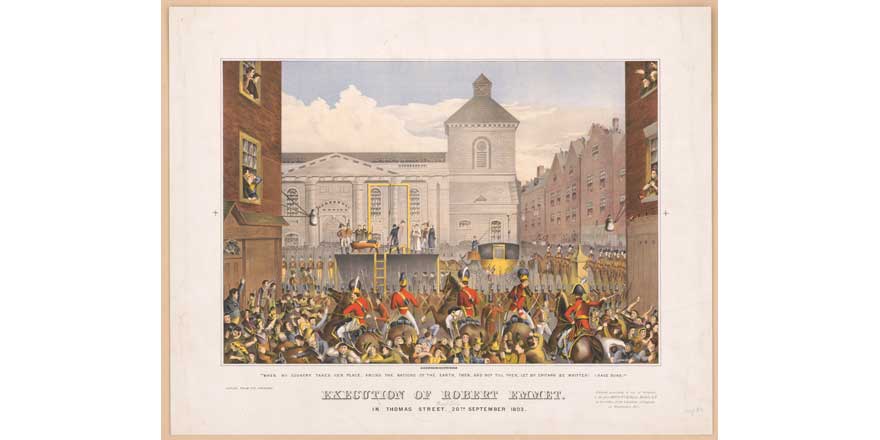
Fig. 9 Depiction of the execution of Robert Emmet, 1803.
Stuart’s framing of the argument in this manner perhaps hides another motive for his rejection of paper money in the north of Ireland, as testimony contributed to the 1810 Bullion Committee reveals:
‘The quantity of gold in the north of Ireland has been much over- rated. I have known the agents of absentee proprietors supply a shop-keeper with a few guineas to sell to the tenants at a premium, on the day that their rents are payable, which on the rents being paid, were again given to the shop-keeper to resell; and this operation to the profit of the agents and the shop-keeper, and to the delusion of the public, has been repeated with the same guineas several times in one day. I have not heard of this trick anywhere but in the north, where it is supposed guineas circulate, and the agents pretend that their employers insist on being paid their rents in gold’.[5]
Stuart plays down any loss to him being paid with paper money for his extensive rental incomes as ‘inconsiderable’, but it is possible that he is preying on the Dublin Administration’s paranoia of further insurrection to profit on the premiums being paid on Irish coinage.
This fascinating letter and others like it, offering a glimpse into this tumultuous period for the English administration in Ireland in the early nineteenth century, is available for consultation in the Royal Irish Academy Library reading room.
References:
Gilbart, James William, History of Banking in Ireland (London: Longman, Rees, Orme, Brown, Green & Longman, 1836), 35.
House of Commons Select Committee Report, ‘State of Ireland as to Circulating Paper, Specie and Current Coin, and Exchange between Ireland and Great Britain,’ 1804, p. 16.
‘Letter from Archbishop of Armagh to Lord Lieutenant regarding bank notes’, 24 October 1803, AO53/1/1/3/3, Royal Irish Academy.
Murtagh, Tim, “Edward Cooke and the Records of the Irish Chief Secretary’s Office,” Virtual Record Treasury of Ireland, 2022, https://virtualtreasury.ie/archive-fever/edward-cooke-and-the-records-of-the-irish-chief-secretarys-office.
Whelan, Kevin, ‘Robert Emmet: between history and memory,’ History Ireland, 2003, https://www.historyireland.com/robert-emmet-between-history-and-memory/.
[1] Tim Murtagh, “Edward Cooke and the Records of the Irish Chief Secretary’s Office,” Virtual Record Treasury of Ireland, 2022, https://virtualtreasury.ie/archive-fever/edward-cooke-and-the-records-of-the-irish-chief-secretarys-office.
[2] James William Gilbart, History of Banking in Ireland (London: Longman, Rees, Orme, Brown, Green & Longman, 1836), 35.
[3] House of Commons Select Committee Report, ‘State of Ireland as to Circulating Paper, Specie and Current Coin, and Exchange between Ireland and Great Britain,’ 1804, p. 16.
[4] Kevin Whelan, ‘Robert Emmet: between history and memory,’ History Ireland, 2003, https://www.historyireland.com/robert-emmet-between-history-and-memory/.
[5] James William Gilbart, History of Banking in Ireland (London: Longman, Rees, Orme, Brown, Green & Longman, 1836), 35.

